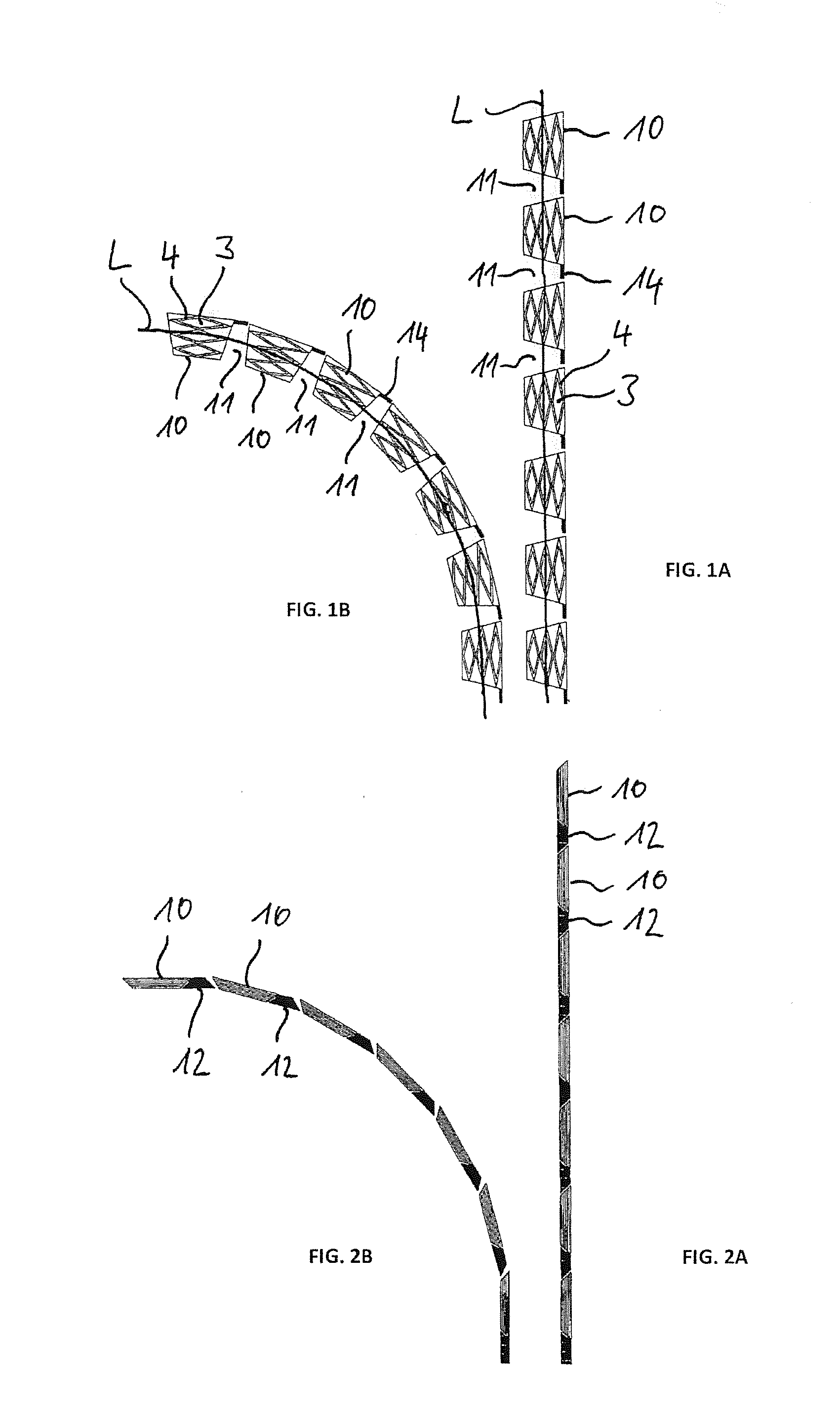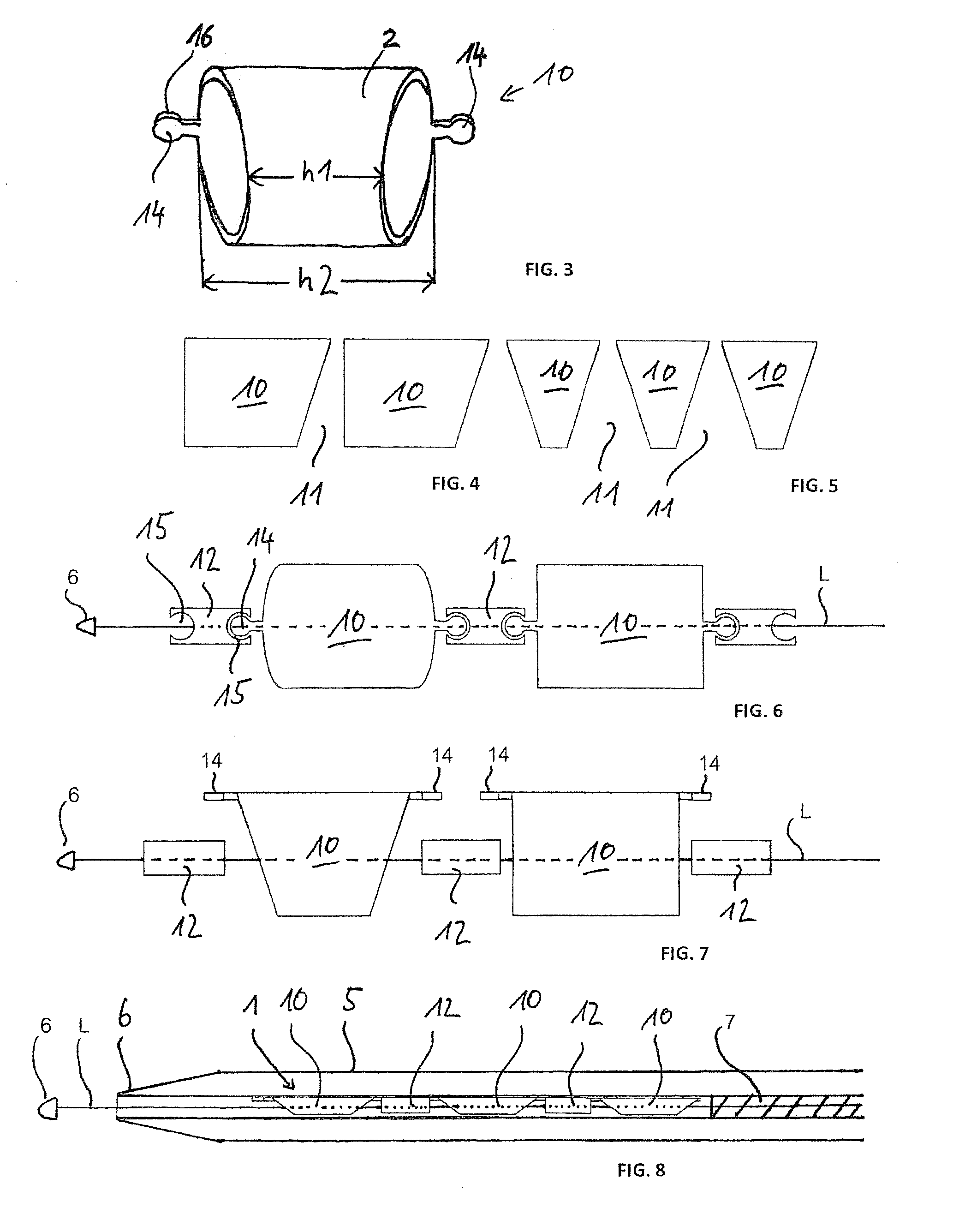Arrangement for implanting stent elements in or around a hollow organ
a technology for stent elements and organs, applied in the field of arrangement for implanting stent elements in or around hollow organs, can solve the problems of vascular wall injuries, stent fragment breakage and individual detachment, and stent elements can be easily damaged, so as to improve stability, facilitate the installation or placement of stent elements, and facilitate the placement
- Summary
- Abstract
- Description
- Claims
- Application Information
AI Technical Summary
Benefits of technology
Problems solved by technology
Method used
Image
Examples
Embodiment Construction
[0028]In FIGS. 1A and 1B, each time a plurality of tubular stent elements 10 are shown, which are arranged on an axial line L, the line L being straight in FIG. 1A and curved in FIG. 1B, in a side view after the implanting with the aid of the arrangement according to the invention. This makes it clear that each time a spacing 11 is formed between neighboring stent elements 10, by which the stent elements are freely movable after the implanting.
[0029]The benefit of the arrangement according to the invention is that the stent elements 10 after placement in the vessel or hollow organ are not connected together and an undulating compressed vascular inner wall during bending can escape into the free spaces 11 between the stent elements 10. This likewise prevents an irritation of the tissue, such as an excessive stress load caused by the structure of the stent elements 10, formed from material-free regions 3 and material webs 4. One can see connection anchors 14 on the stent elements 10, ...
PUM
 Login to View More
Login to View More Abstract
Description
Claims
Application Information
 Login to View More
Login to View More - R&D
- Intellectual Property
- Life Sciences
- Materials
- Tech Scout
- Unparalleled Data Quality
- Higher Quality Content
- 60% Fewer Hallucinations
Browse by: Latest US Patents, China's latest patents, Technical Efficacy Thesaurus, Application Domain, Technology Topic, Popular Technical Reports.
© 2025 PatSnap. All rights reserved.Legal|Privacy policy|Modern Slavery Act Transparency Statement|Sitemap|About US| Contact US: help@patsnap.com



